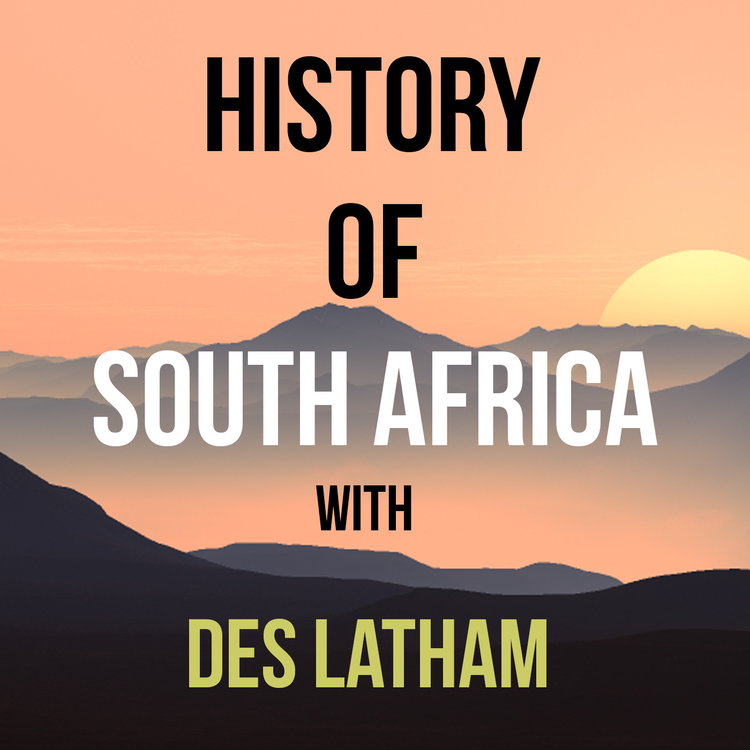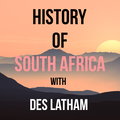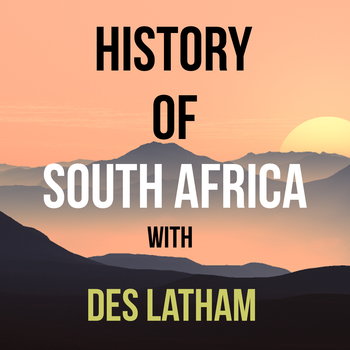
Episode 189 - Karl Marx at the Great Exhibition, Eyre's Great Cattle Patrol and Smith gets the boot
Loading player...
1851 it is, and the Great Exhibition of the Works of Industry of All Nations, also known as the Great Exhibition or the Crystal Palace Exhibition took place in Hyde Park, London, from 1 May to 15 October 1851.
It was the first in a series of World's Fairs, exhibitions of culture and industry that became popular in the 19th century.
Famous people of the time attended the Great Exhibition, including Charles Darwin, Karl Marx, Michael Faraday, Samuel Colt, writers like Charlotte Brontë, Charles Dickens, Lewis Carroll, George Eliot, Alfred Tennyson, and William Makepeace Thackeray.
Schweppes was the official sponsor. The Great Exhibition was a celebration of modern industrial technology and design - mainly for the British who were trying to show how through tech, the world would be a better place - leading the nations in innovations so to speak.
Six million people, equivalent to a third of the entire population of Britain at the time, visited the Great Exhibition, averaging over 42 000 visitors a day, sometimes topping 100 000. Thomas Cook managed the travel arrangements for the Exhibition, and made the equivalent of 33.2 million pounds in today’s cash - or 186 000 pounds back in 1851, and promptly used the money to found the Victoria and Albert Museum and the Science Museum, as well as the Natural History Museum.
Inventor Frederick Bakewell demonstrated a precurser to something that we know as a Fax Machine. The New Zealand exhibit was well liked, featuring Maori crafts such as flax baskets, carved wooden objects, eel traps, mats, fish hooks and the scourge of the British army in Kiwiland, their hand clubs.
A couple of conservative politicians let it be known they were not happy about the Exhibition, saying visitors would turn into a revolutionary mob. Considering that Karl Marx was part of the visitors - perhaps not unsurprisingly.
But did Karl Marx use the services of Thomas Cook?
Not exactly a question destined for a dissertation.
This Exhibition went on to become a symbol of the Victorian Era.
Meanwhile … a serious War in one of its colonies, the Cape was more than disquietening - it appeared this war was more a Victorian error. AS in mistake.
amaNgqika chief Maqoma was causing Harry Smith sleepness nights, and Colonel Fordyce and his colleagues were fighting for their lives along the Amathola mountains.
The Waterkloof ridges — in a place to the west of Fort Beaufort — was where the Khoekhoe and coloured marksmen made their greatest impact. The ex-Cape Mounted Rifles members amongst the rebels had other uses. They understood the British bugle calls, having been trained by the British, further exasperating men like Henry Somerset and Colonel Fordyce.
The amaXhosa and Khoekhoe rebels were also much more organised than in previous wars against the invaders. They targeted the Messengers reading updates from British commanders intended for Grahamstown and been reading the reports, and some of the rebels were actually being supplied directly from Grahamstown itself.
Then Henry seemed to receive an injection of spine - of determination. On November 6th 1851 he massed two large columns, one under Colonel Fordyce, and the other led by Colonel Michel. Unbeknownest to him, this was to be Fordyce’s last mission.
Michel’s column had to advance up the Waterkloof aka Mount Misery, while Fordyce’s column would wait above, on the summit. Michel would drive the rebels up the mountain, Fordyce would trap them and voila! Victory.
It didn’t quite work that way.
It was the first in a series of World's Fairs, exhibitions of culture and industry that became popular in the 19th century.
Famous people of the time attended the Great Exhibition, including Charles Darwin, Karl Marx, Michael Faraday, Samuel Colt, writers like Charlotte Brontë, Charles Dickens, Lewis Carroll, George Eliot, Alfred Tennyson, and William Makepeace Thackeray.
Schweppes was the official sponsor. The Great Exhibition was a celebration of modern industrial technology and design - mainly for the British who were trying to show how through tech, the world would be a better place - leading the nations in innovations so to speak.
Six million people, equivalent to a third of the entire population of Britain at the time, visited the Great Exhibition, averaging over 42 000 visitors a day, sometimes topping 100 000. Thomas Cook managed the travel arrangements for the Exhibition, and made the equivalent of 33.2 million pounds in today’s cash - or 186 000 pounds back in 1851, and promptly used the money to found the Victoria and Albert Museum and the Science Museum, as well as the Natural History Museum.
Inventor Frederick Bakewell demonstrated a precurser to something that we know as a Fax Machine. The New Zealand exhibit was well liked, featuring Maori crafts such as flax baskets, carved wooden objects, eel traps, mats, fish hooks and the scourge of the British army in Kiwiland, their hand clubs.
A couple of conservative politicians let it be known they were not happy about the Exhibition, saying visitors would turn into a revolutionary mob. Considering that Karl Marx was part of the visitors - perhaps not unsurprisingly.
But did Karl Marx use the services of Thomas Cook?
Not exactly a question destined for a dissertation.
This Exhibition went on to become a symbol of the Victorian Era.
Meanwhile … a serious War in one of its colonies, the Cape was more than disquietening - it appeared this war was more a Victorian error. AS in mistake.
amaNgqika chief Maqoma was causing Harry Smith sleepness nights, and Colonel Fordyce and his colleagues were fighting for their lives along the Amathola mountains.
The Waterkloof ridges — in a place to the west of Fort Beaufort — was where the Khoekhoe and coloured marksmen made their greatest impact. The ex-Cape Mounted Rifles members amongst the rebels had other uses. They understood the British bugle calls, having been trained by the British, further exasperating men like Henry Somerset and Colonel Fordyce.
The amaXhosa and Khoekhoe rebels were also much more organised than in previous wars against the invaders. They targeted the Messengers reading updates from British commanders intended for Grahamstown and been reading the reports, and some of the rebels were actually being supplied directly from Grahamstown itself.
Then Henry seemed to receive an injection of spine - of determination. On November 6th 1851 he massed two large columns, one under Colonel Fordyce, and the other led by Colonel Michel. Unbeknownest to him, this was to be Fordyce’s last mission.
Michel’s column had to advance up the Waterkloof aka Mount Misery, while Fordyce’s column would wait above, on the summit. Michel would drive the rebels up the mountain, Fordyce would trap them and voila! Victory.
It didn’t quite work that way.

